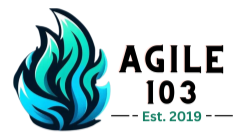Visualizing Work, Eliminating Waste, and Accelerating Value Delivery in Agile Teams
Every organization wants to deliver value faster. Yet many teams struggle not because of poor execution, but because the system around them slows things down. Bottlenecks, handoff delays, unclear processes, and invisible waste quietly drain productivity and morale.
Value Stream Mapping (VSM) brings those hidden barriers to the surface. It helps teams visualize how work flows, identify friction points, and optimize for speed and quality. Our upcoming session on Value Stream Mapping & Optimization will help you turn process clarity into competitive advantage.
Why Value Streams Matter in Agile
Agile delivery is not just about sprints and standups, it’s about continuous flow of customer value. Value Stream Mapping, originally introduced in Lean manufacturing, gives Agile organizations a clear lens into how value actually moves across teams and systems.
Think of it as your diagnostic x-ray, revealing where value slows or disappears.
A powerful breakdown from Planview explains why VSM is now foundational in digital and Lean-Agile environments.
Similarly, Lean Enterprise Institute highlights how mapping exposes waste that teams often overlook.
Core Benefits of Value Stream Mapping
- Increased transparency: Teams clearly see where work gets stuck or duplicated.
- Reduced bottlenecks & waste: VSM highlights delays, rework loops, and unnecessary steps.
- Better alignment across teams: Cross-functional collaboration improves when everyone sees the same flow.
- Faster time-to-value: When flow improves, customer value arrives sooner and with more predictability.
A Simple 6-Step VSM Process
Here’s a practical flow you’ll explore in our workshop:
-
Define the value stream
Identify the product or service journey, from idea to customer delivery. -
Map current state
Capture real-world workflows, not assumptions. -
Measure delays & cycle time
Use real data like lead time, wait time, and throughput.
DevOps Research & Assessment shares helpful flow metrics here: -
Identify waste & constraints
Look for excess approvals, rework, queues, or unclear ownership. -
Design the future state
Streamlined workflow with reduced wait time and improved flow. -
Implement & measure improvements
Start small, iterate, and validate improvements through performance metrics.
Common VSM Pitfalls & Fixes
| Pitfall | Fix |
|---|---|
| Maps only on paper, not in practice | Conduct live process walks and interviews |
| No measurement | Capture time, flow, and throughput data |
| Done once a year | Treat VSM as a continuous improvement tool |
| Focus only on tools | Focus on people, flow, and systems first |
A practical article from Atlassian reinforces aligning VSM to real delivery and feedback cycles, not static diagrams:
Who This Session Is For
-
Scrum Masters and Agile Coaches improving delivery flow
-
Product Managers prioritizing customer-value delivery
-
PMO and Transformation leaders navigating scaling challenges
-
Anyone seeking to connect strategy to execution more effectively
Expect to walk away with:
- A ready-to-use VSM template
- Example current and future-state maps
- Flow metrics and analysis tools
- Facilitation tips for mapping workshops
If you want to stop chasing speed and start designing for flow, this session is for you.
Click below to reserve your seat and unlock a clearer, faster path to value delivery.
Register
For “Value Stream Mapping & Optimization”
